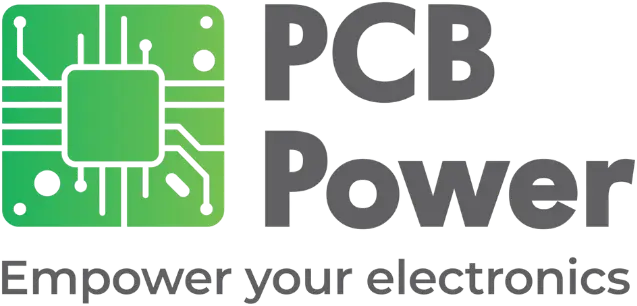
Key DFA and DFM Rules for Aerospace and Defence PCB Assembly Projects
Designing PCBs for high-reliability sectors like aerospace and defence isn’t just about performance. Precision, repeatability, and strict conformance are equally important. As India’s PCB manufacturing ecosystem evolves, engineers building mission-critical systems must follow stringent Design for Assembly (DFA) and Design for Manufacturability (DFM) norms to meet exacting standards of quality and safety.
This blog maps out some of the key DFM and DFA rules PCB designers and assemblers must follow to succeed in defence and aerospace projects.
Understanding DFM and DFA in PCB Assembly
DFM (Design for Manufacturability) ensures the PCB can be fabricated reliably and economically. It focuses on design elements like trace widths, clearances, drill sizes, and layer stack-ups to suit the capabilities of the fabricator.
DFA (Design for Assembly) focuses on simplifying the PCB layout for a seamless assembly process. This involves design optimising for component placement, orientation, and accessibility for inspection and testing, reducing errors and improving throughput in complex assemblies.
In aerospace and defence applications, where boards are exposed to extreme temperatures, vibrations, and electromagnetic interference, both principles work together to achieve robustness, reliability, and longevity.
Key DFA Rules for Aerospace/Defence PCBs
1. Component Placement
Grouping and aligning similar electronic components simplifies automated pick-and-place processes, speeding up assembly and reducing the risk of misplacement. Maintaining a minimum spacing of 10mil (0.25mm) between components helps avoid solder bridging or shadowing during reflow, ensuring reliable solder joints and better manufacturability.
2. Minimise Manual Assembly
Surface Mount Technology (SMT) is preferred over through-hole mounting, as automated SMT significantly boosts assembly speed, consistency, and quality. Through-hole components should be reserved only when additional mechanical strength is necessary—for example, for connectors that must withstand repeated matings or severe mechanical stress typical in aerospace and defence environments.
3. Clear Markings
Using silkscreen indicators for component orientation (such as pin 1 marks) and polarity (especially for diodes, LEDs, and capacitors) greatly minimizes manual placement errors. Clear visual cues help assembly operators identify correct installation, thus reducing rework and improving first-pass yield.
4. Testability
Designing PCBs with well-placed test pads and test access points enables both in-circuit and functional testing. This approach helps in early detection of electrical faults, misassemblies, and defective components—essential for mission-critical aerospace and defence products, where field failures are unacceptable.
5. Mechanical Strength
Incorporate mounting holes, stiffener bars, and PCB reinforcements—especially around heavy connectors or edges subject to vibration. These features ensure that the PCB withstands mechanical stresses from shock, vibration, and handling throughout its operational life, which is especially crucial in high-reliability aerospace applications.
Key DFM Rules for Aerospace/Defence PCBs
1. Trace and Clearance Specs
Adhere strictly to IPC-6012 Class 3 standards for trace width, spacing (=4-6mil), and annular ring size. These guidelines are set to ensure reliability in demanding environments, as Class 3 PCBs are required to perform uninterrupted over extended lifetimes.
2. Aspect Ratio Control
Keeping the board's aspect ratio (the ratio of PCB thickness to the smallest drilled hole diameter) below 6:1 is critical for achieving consistent plating inside holes. Exceeding this ratio above 8:1 may lead to poor plating and unreliable vias, potentially resulting in intermittent connections or failures in extreme conditions.
3. Controlled Impedance and Stack-Up
Define impedance targets during the design stage and communicate stack-up (layer configuration) details to manufacturers early. Precisely controlled impedance ensures high-frequency signals maintain integrity, which is essential for radar, communication, and avionics systems. Early stack-up sharing allows manufacturers to maintain the stock of suitable materials to meet these demanding requirements.
4. Avoid Complex Drill Structures
Limit the use of blind and buried vias unless absolutely necessary, as these add fabrication complexity, cost, and risk. Simple via structures enhance yield, save time and cost, and minimize the risk of open connections or manufacturing defects.
5. Early Manufacturer Collaboration
Engage your PCB manufacturer at the beginning of the design phase by sharing comprehensive CAD files, netlists, and stack-up details. This collaborative approach helps identify design-for-manufacturability issues—such as incompatible materials or problematic footprints—before fabrication, preventing costly delays and redesigns.
Conclusion
In the aerospace and defence industry, DFA and DFM are essential. They help reduce production delays, provide mechanical and thermal reliability, and ensure adherence to rigid aviation and military standards. For engineers and manufacturers in India, applying these techniques will not only meet industry requirements but also provide a competitive edge in global defence manufacturing.
At PCB Power, our team is dedicated to offering high-reliability solutions for PCB assembly of defence and aerospace applications to ensure your designs meet the highest industry standards.
Reach out to us today to ensure your defence or aerospace project meets the highest ratings from the start of the design process.
FAQs
1. What is the difference between DFA and DFM?
DFA is for making PCB layouts easier to assemble, while DFM ensures the design can be manufactured efficiently and reliably.
2. Why is DFA important for PCB assembly in aerospace applications?
DFA reduces the chance of defects in PCB assembly that could lead to catastrophic failure in critical mission applications that may be subject to extreme vibration or temperature changes.
3. What is a common DFA issue for defence PCBs?
Inconsistent orientation of components, not enough space, poor thermal relief, and not enough access for testing are some common DFA issues that may occur.
4. Can DFA be applied to automated assembly?
Yes, if DFA is correct, faster, more accurate automated assembly can be achieved, leading to lower labour costs and repeatability.
5. Should you incorporate DFA early in the design?
Absolutely! If DFA is incorporated early in the layout, time can be saved, redesigned, reduced if even possible, and it will be more seamless to drop into manufacturing.



